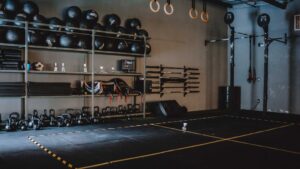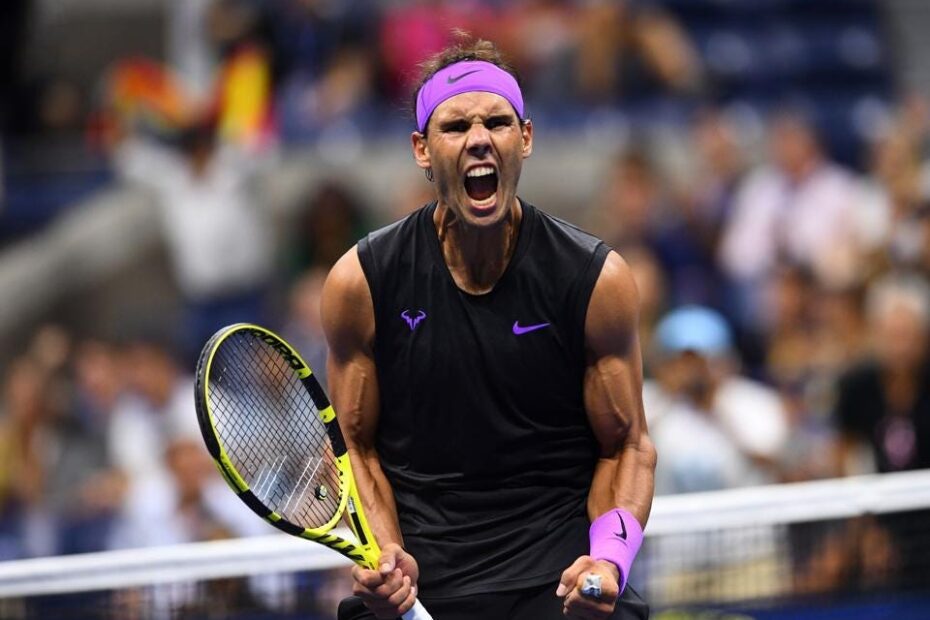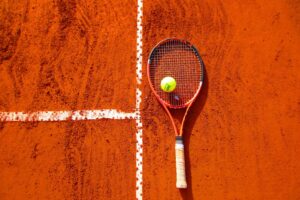Tennis is one of the most demanding sports, requiring players to excel in physical endurance, mental toughness, and adaptability. A professional tennis player’s day isn’t just about hitting balls on the court—it’s a carefully structured routine combining training, recovery, nutrition, and travel logistics.
In this article, we’ll take a deep dive into the daily life of a pro tennis player, shedding light on their rigorous schedules and the dedication it takes to compete at the highest level.
Morning: Rise and Shine for a Focused Start
Wake-Up Routine
Most professional tennis players start their day early, often around 6:30 or 7:00 AM, depending on their match or training schedule. A good morning routine sets the tone for the rest of the day.
Morning Mobility and Stretching
- Dynamic Warm-Ups: Yoga or light stretching to improve flexibility and reduce the risk of injury.
- Breathing Exercises: Players like Novak Djokovic emphasize mindfulness practices to enhance focus and reduce stress.

Nutritional Breakfast
A high-energy breakfast is essential to fuel the body for intense training sessions. A typical meal might include:
- Oatmeal with fruits and nuts.
- Smoothies packed with proteins, greens, and antioxidants.
- Hydration with plenty of water or electrolyte-rich drinks.

Midday: Intense Training and Practice
On-Court Practice
Professional players spend 3–5 hours on the court daily, working on technical and tactical aspects of their game.
- Technical Drills: Improving serves, returns, and footwork.
- Match Simulation: Practicing under conditions that mimic competitive scenarios.
- Focus Areas: Players like Rafael Nadal dedicate time to specific surfaces (e.g., clay court footwork).
Gym and Fitness Workouts
After court sessions, players hit the gym for strength and conditioning. Typical gym routines include:
- Strength Training: Weightlifting to build power for serves and groundstrokes.
- Endurance Workouts: Cardio sessions like running or cycling to boost stamina.
- Agility Drills: Ladder drills and sprints to enhance movement.

Afternoon: Recovery and Strategic Preparation
Recovery is Key
After intense physical activity, recovery becomes a priority to ensure players stay injury-free and maintain peak performance.
- Massage Therapy: Reduces muscle soreness and aids recovery.
- Ice Baths or Contrast Showers: Popular methods for reducing inflammation.
- Naps: A short nap (20–30 minutes) helps players recharge.
Lunch for Sustained Energy
Post-training meals are balanced and nutrient-dense, with an emphasis on recovery.
- Lean proteins (e.g., chicken, fish, or tofu).
- Whole grains like quinoa or brown rice.
- Vegetables for essential vitamins and minerals.

Evening: Match Strategy and Light Activities
Analyzing Opponents
Coaches and players analyze match footage to develop strategies for upcoming games.
- Data Analysis: Reviewing serving patterns and weaknesses in opponents.
- Tactical Planning: Creating game plans based on surface and conditions.
Light Evening Practice
Some players opt for a short, low-intensity practice session focusing on mobility or specific shots.
Dinner and Relaxation
Dinner is usually lighter to avoid disrupting sleep but still includes carbohydrates and proteins for muscle repair. Evenings are also a time for relaxation and mental unwinding, which may involve:
- Watching movies or reading.
- Spending time with family or engaging in hobbies.
Travel Logistics: Navigating a Global Tour
Pro tennis players spend around 40 weeks a year traveling to tournaments across the globe. Managing travel effectively is a skill in itself.
Dealing with Jet Lag
- Sleep Schedules: Adjusting sleep patterns ahead of travel.
- Hydration: Drinking plenty of water to combat dehydration during flights.
- Stretching: Staying active on long-haul flights to improve circulation.
Tournament Adaptation
Arriving days before a tournament allows players to acclimate to local conditions, including weather, time zones, and court surfaces.
Real-Life Examples of Player Routines
Novak Djokovic
- Djokovic incorporates meditation and yoga into his daily routine to enhance mental clarity. His gluten-free diet is also a key factor in his endurance.
Serena Williams
- Serena balances being a mother with her training regimen, demonstrating the importance of time management.
Carlos Alcaraz
- As one of the sport’s rising stars, Alcaraz emphasizes agility and speed, tailoring his training for clay and hard courts.
FAQs: A Player’s Day Demystified
Q: How many hours do pro tennis players train each day?
- Players typically train 4–6 hours, including on-court practice and gym sessions.
Q: Do tennis players train on their rest days?
- Yes, but the focus is on light activities like stretching, swimming, or yoga to maintain flexibility and recovery.
Q: How do players manage nutrition during tournaments?
- Nutritionists prepare customized meal plans to ensure optimal energy and recovery.
Q: What is the biggest challenge for players while traveling?
- Adapting to new time zones and conditions while staying fit and focused.
Q: How important is mental preparation?
- Crucial. Sports psychologists help players manage pressure, visualize success, and stay resilient.
Conclusion: The Dedication Behind the Glory
A pro tennis player’s life is a blend of intense training, meticulous preparation, and constant travel. While the routines may seem grueling, they are essential for achieving success in one of the most competitive sports in the world.
By understanding the daily efforts of these athletes, fans can gain a deeper appreciation for their favorite players’ performances on the court. The next time you watch a match, remember the hard work and dedication that go into every shot, serve, and rally.









